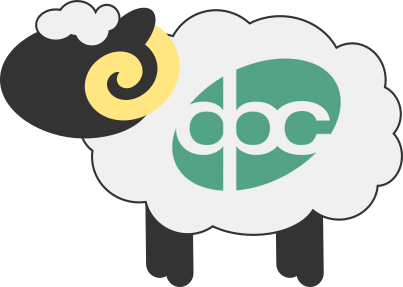At the Canadian Museum of Immigration at Pier 21, the focus of the collection is digital-born and digitized items, including oral histories, written stories, and digital archival materials like documents and photographs.

Digital Preservation Coalition
As a result of our focus on digital content, the Collections department is continuously working to assess and improve our digital stewardship activities. International organizations such as the Digital Preservation Coalition (DPC) and the National Digital Stewardship Alliance (NDSA) are leaders in supporting heritage institutions with this work, and they both have free assessment tools available for anyone to use. Our team recently spent some time completing both of these assessments, in order to measure how far we have come on this journey of preserving bits and bytes!
DPC RAM – Rapid Assessment Model
This tool has been designed to enable internal benchmarking of an organization’s digital preservation capability, and is incredibly helpful for identifying goals.
The Collections team has completed the RAM in 2021, 2022 and again in 2024, with the aim of making this an annual exercise. We looked at organizational areas such as how and where we store content, our digital preservation policies and procedures, how we acquire digital content from our donors, and our technical capabilities.
The RAM tool also features a graph to illustrate where you are, and where you want to be in the future. In our most recent assessment, we were able to move up a level in four different categories and expanded our target levels for the coming years. This helps us to set our departmental aims going forward, so that we can continue to preserve the invaluable personal experiences of Canadian immigrants in digital formats.
2022 DPC Assessment - Current Level in Blue and Target Level in Orange.
2024 DPC Assessment - Current Level in Blue and Target Level in Orange
NDSA Levels of Preservation
The NDSA tool is a matrix that weighs up factors such as file storage, integrity, control, metadata and content. This was our first year completing the assessment, and we achieved a level 2 or 3 in most of the categories, which means digital content is protected and monitored to recognized digital preservation standards. We also marked some activities as “achieved” — such as monitoring for format obsolescence, checking file integrity, storing content in separate geographic locations and in our digital preservation system Preservica. Completing the matrix also identified objectives to aim for in future, so we can find ways to adapt and improve our processes as technology changes.
| Functional Area | Level 1 (Know your content) | Level 2 (Protect your content) | Level 3 (Monitor your content) | Level 4 (Sustain your content) |
|---|---|---|---|---|
| Content | Document file formats and other essential content characteristics including how and when these were identified. |
Verify file formats and other essential content characteristics. Build relationships with content creators to encourage sustainable file choices. |
Monitor for obsolescence, and changes in technologies on which content is dependent. | Perform migrations, normalizations, emulation, and similar activities that ensure content can be accessed. |
The DPC reminds us that “digital preservation refers to the series of managed activities necessary to ensure continued access to digital materials for as long as necessary” as well as “actions required to maintain access to digital materials beyond the limits of media failure or technological and organizational change.”[1] With that ethos in mind, here at the Museum, we know that digital preservation requires continuous and active monitoring of content to ensure it is safe for future generations.
Now that we have a baseline, we will use these assessments to guide our preservation goals going forward, and identify specific tasks for measurable progress. We are very proud of the work in the Collections department and across the Museum that has made these achievements possible!

Find out more about the Museum’s Collection or search the online portal.